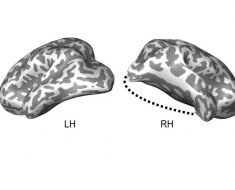Radiotherapy is an important form of treatment for cancer patients but, currently, treatment is largely “one size fits all.” However, a new study points to the potential for treatment to become more tailored to the tumour.
More than half of all cancer patients receive some form of radiotherapy, and radiation treatment accounts for approximately 40 percent of all cancer cures.
Despite this high success rate, and the fact that some cancers simply melt away after radiation, while others are stubbornly resistant, there is still no regulatory approval for any test to determine how a particular tumour in a specific cancer patient is likely to respond to radiation treatment.
Now a new study of seven cancer types, using sophisticated laser-based metallomics, reveals that the manganese content of tumours may provide a rapid way to determine which tumours are more likely to respond to radiotherapy.
This completely new approach to cancer diagnostics breaks the mould of the essentially one-size-fits-all radiation treatment, allowing a personalised determination of the key properties of a tumour.
The University of Technology Sydney (UTS) based research stems from observations that certain bacteria survive massive doses of radiation by using manganese to chemically scavenge the very damaging reactive oxygen species (ROS).
Professor Philip Doble, Director of the UTS Elemental Bio-imaging Facility, said this resulted in considering the importance of manganese in human tumours.
“Together with Dr. George Miklos, who co-authored the study, we both pursued this area, reasoning that the fundamental chemical properties of manganese should apply to human cancers, and that high levels of manganese should act as a ‘protective shield’ in certain types of tumours making them more resistant to ionising radiation.”
Using an elemental imaging technology called LA-ICP-MS (laser ablation-inductively coupled plasma-mass spectrometry), Professor Doble analysed patient samples from different human tumour types where radiation resistance had been documented. For example, advanced brain cancers are notoriously radiation resistant, while some testicular cancers are exquisitely sensitive to radiotherapy.
“Of the seven cancers we tested, brain and testicular represent bookends, if you like, for radio-responsiveness. We measured the manganese content in tumour samples to see if the amount of manganese present was associated with patient survival. It turns out that it was.”
The authors say that the major outcome of the study is that measurements of manganese levels, and their distribution, in the seven tumour types tested could provide a clinically useful measure of the probability of a particular tumour’s response to radiotherapy, as well as the probability of cancer reoccurrence in that patient.
The implications of this novel research for cancer are so far reaching that Professor Doble says “manganese—based diagnostics could become the preeminent tool in clinical radiotherapy.”
To take the research to the next stage, and to better understand how manganese-based radiation shields vary in their efficacy in different patients , samples from more patients with detailed histories of radiation treatment will be examined.
Source: Read Full Article





